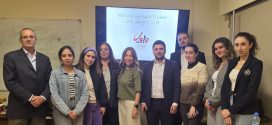By creating an inexpensive bench-top technique, as described in the American Institute of Physics' journal Review of Scientific Instruments, Los Alamos National Lab (LANL) researchers are making these highly desirable metamaterials more accessible.
Their technique harnesses an acoustical wave force, which causes nano-sized particles to cluster in periodic patterns in a host fluid that is later solidified, explains Farid Mitri, a Director's Fellow, and member of the Sensors & Electrochemical Devices, Acoustics & Sensors Technology Team, at LANL.
"The periodicity of the pattern formed is tunable and almost any kind of particle material can be used, including: metal, insulator, semiconductor, piezoelectric, hollow or gas-filled sphere, nanotubes and nanowires," he elaborates.
The entire process of structure formation is very fast and takes anywhere from 10 seconds to 5 minutes. Mitri and colleagues believe this technique can be easily adapted for large-scale manufacturing and holds the potential to become a platform technology for the creation of a new class of materials with extensive flexibility in terms of periodicity (mm to nm) and the variety of materials that can be used.
"This new class of acoustically engineered materials can lead to the discovery of many emergent phenomena, understanding novel mechanisms for the control of material properties, and hybrid metamaterials," says Mitri.
Applications of the technology, to name only a few, include: invisibility cloaks to hide objects from radar and sonar detection, sub-wavelength focusing for production of high-resolution lenses for microscopes and medical ultrasound/optical imaging probes, miniature directional antennas, development of novel anisotropic semiconducting metamaterials for the construction of effective electromagnetic devices, biological scaffolding for tissue engineering, light guide, and a variety of sensors.
###
The article, "Characterization of acoustically engineered polymer nanocomposite metamaterials using x-ray microcomputed tomography," by Farid G. Mitri, Fernando H. Garzon, and Dipen N. Sinha, appears in the journal Review of Scientific Instruments. See: http://link.aip.org/link/?RSI/82/034903
CAPTION: These images show microcomputed x-ray tomography renderings of an acoustically engineered nanocomposite metamaterial based on ~5nm-diameter diamond nanoparticles.
ABOUT AIP
The American Institute of Physics is a federation of 10 physical science societies representing more than 135,000 scientists, engineers, and educators and is one of the world's largest publishers of scientific information in the physical sciences. Offering partnership solutions for scientific societies and for similar organizations in science and engineering, AIP is a leader in the field of electronic publishing of scholarly journals. AIP publishes 12 journals (some of which are the most highly cited in their respective fields), two magazines, including its flagship publication Physics Today; and the AIP Conference Proceedings series. Its online publishing platform Scitation hosts nearly two million articles from more than 185 scholarly journals and other publications of 28 learned society publishers.
Review of Scientific Instruments
Review of Scientific Instruments, published by the American Institute of Physics, is devoted to scientific instruments, apparatus, and techniques. Its contents include original and review articles on instruments in physics, chemistry, and the life sciences; and sections on new instruments and new materials. One volume is published annually. Conference proceedings are occasionally published and supplied in addition to the Journal's scheduled monthly issues. RSI publishes information on instruments, apparatus, techniques of experimental measurement, and related mathematical analysis. Since the use of instruments is not confined to the physical sciences, the journal welcomes contributions from any of the physical and biological sciences and from related cross-disciplinary areas of science and technology. See: http://rsi.aip.org/
Farid Mitri


 الاتحاد الكاثوليكي العالمي للصحافة- لبنان اوسيب – لبنان
الاتحاد الكاثوليكي العالمي للصحافة- لبنان اوسيب – لبنان




